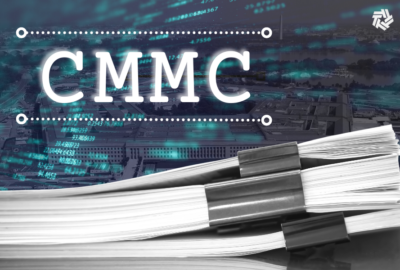Why federal CIOs, CISOs still have concerns about the cloud
Has there been a break in the cloud? Symantec recently released its 2010 Break in the Clouds Report, which shows that many CIOs and CISOs in the federal government...
wfedstaff | June 3, 2015 12:54 pm
Has there been a break in the cloud?
Symantec recently released its 2010 Break in the Clouds Report, which shows that many CIOs and CISOs in the federal government still have real concerns about security.
Ned Miller, director of public sector strategy for Symantec’s public sector market, breaks it down for us today.
NM: The purpose, or intent, of the report was really simply to evaluate where agencies were, or currently are, in their overall cloud strategy, and then evaluate the ones that are early adopters, specifically with any challenges or barriers they’ve had with implementation, and really to focus on their key concerns. That will allow us to position how we can help our government clients going forward.
FCB: And what were some of your key findings?
NM: There were a number of themes that were pretty consistent in terms of the evidence that we collected.
The first area that we were very focused on was just how many agencies had actually implemented cloud, or cloud-based applications, or any platform or infrastructure. We accounted for about 23 percent of the agencies that participated in the survey have actually implemented cloud, and about 35 percent are planning to implement.
A couple other key areas that I think were interesting and noteworthy [are] — the emphasis on private clouds versus public clouds, and where agencies have already adopted some cloud strategies. About 58 percent of agencies are already using a private cloud, or in-house cloud, versus approximately 64 percent of those who are planning . . . to use private or in-house cloud versus using an outsourced cloud model.
FCB: We always, inevitably, come back to the security question. [Your survey] says 89 percent say data protection privacy is their top issue. Can you break down those numbers a little bit for us?
NM: Based, again, on the survey, about 80 percent of the participants came back and responded with that they believe that encryption in the cloud is a key area that needs to be addressed, and approximately 70 percent of them have come back and required data segmentation for the actual data in the cloud itself.
FCB: In terms of where agencies are now in terms of implementing cloud, you’ve got a slide [in the report] that says ‘proceeding with caution’. How does that tie into the security question?
NM: Well, in terms of ‘proceeding with caution’, a number of CIOs and CISOs that I’ve spoken to personally are still moving forward based on the mandates coming from OMB with their implementation of cloud strategies; however, the concerns are still centered mostly around security.
It still comes back to the data itself, protection of that data, and they’re fairly conservative in terms of the implementation approach to date, and therefore they’re really relying on building private clouds and building inside their own infrastructure. So, those are kind of still the key concerns — it really has to do with the data itself and where it resides.
FCB: So, a lot of agencies say they feel safer in these private clouds, rather than public clouds, but according to your survey, almost half who have implemented cloud don’t know if they’ve experienced a breach or an attempted breach. Is this cause for concern? Should we be really worried about this?
NM: We should, and, again, this speaks to the desired end state, which is a clear set of standards to address how to adopt and deploy and implement a secure cloud, which leads to FedRamp. . . . [It] is really designed to unify cloud computing security standards across the U.S. Government. Obviously, the initiative is managed by the folks up at NIST and Peter Mell, and he has a big task in front of him. We believe that, overall, this attempt to standardize a security model around cloud computing will take some time to evolve, and the biggest challenge we see with it, quite honestly, is not necessarily the adoption of the standards, but how quickly the industry — both the people, the process and the technology — are moving, versus how quickly standards can be adopted.
So, the biggest challenge to the standard, I believe, will be that we’re moving much faster than what standards typically have been able to get out.
FCB: What other barriers — perceived or real — are agencies facing at this point as they’re looking at cloud adoption.
NM: My sense is, at this point, that it’s going to come down to, specifically, expertise on the government agency side in terms of developing a technology strategy to deploy these private clouds.
So, we’re crossing into somewhat uncharted territory where agencies are building, with their own resources and infrastructure, these private clouds without necessarily a lot of strict guidance to any security standards, because they don’t quite exist yet.
So, in their rush to move towards the cloud, and derive the benefits that cloud provides in terms of efficiencies, economies of scale, etc., security often is still one of those scenarios that’s not baked in automatically.
FCB: And, finally, in terms of the ‘what’s next’ aspect of this, I believe you did talk to some agencies that are already implementing or starting to implement cloud computing. What did they tell you? What did you find out from them?
NM: It’s interesting in that, outside of the survey, I personally have been in contact, as I mentioned, with a number of CIOs and CISOs, and on the federal side, there’s a little over a dozen or so agencies that have fairly mature programs. They’ve actually stood up applications, some of which are service-to-citizen applications, the majority of which are still internal.
The notion of cloud computing is really catching on. We’re starting to see a number of agencies really jump towards that. I think in terms of what’s next is — they really need a cloud security strategy, instead of guidance from the authoritative sources, to help them ensure that, as they move forward with the guidelines that have been laid out by the federal budget planning process, [which says that] by September, 2011, any major IT investment acquisition has to provide an alternative analysis of a cloud strategy.
So, in terms of being able to support the mandates coming from OMB, I think the thing that we need the most is clear guidance around standards, and some assurance around the minimum security standards and criteria for both the industry partners [and] the government itself, specifically around data encryption, what the certification and accreditation process is really going to be like, what it means for one agency to approve a certain cloud provider [and] if another one can truly adopt that particular vendor, and then the notion of data segmentation for cloud solutions — whether it’s public or private.
Copyright © 2025 Federal News Network. All rights reserved. This website is not intended for users located within the European Economic Area.





